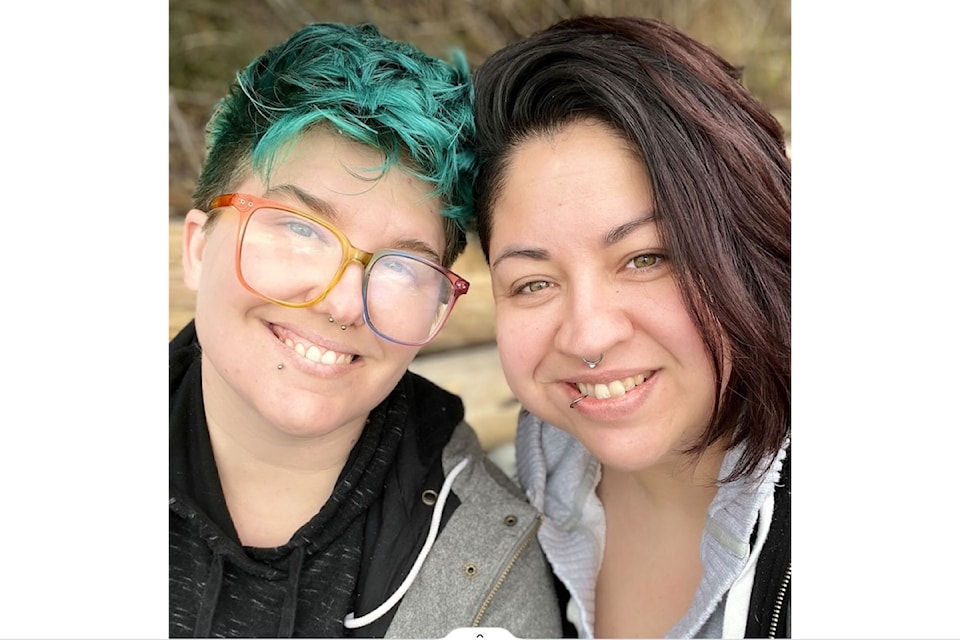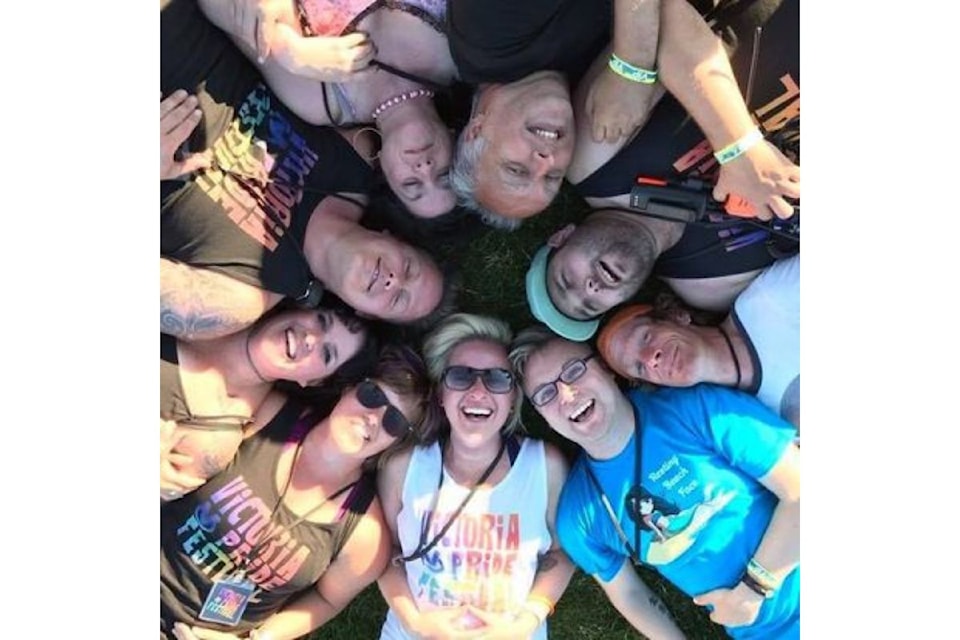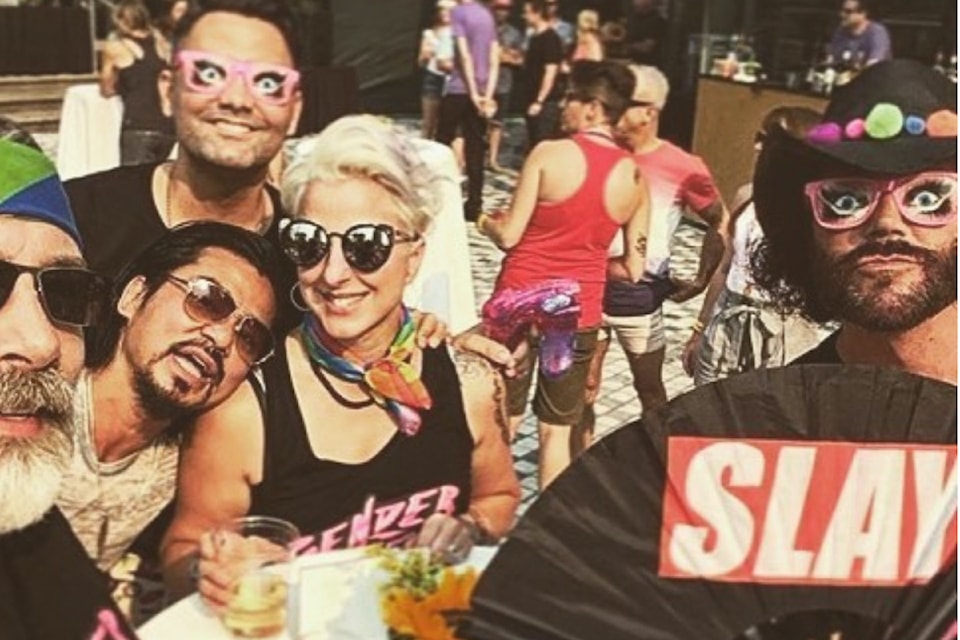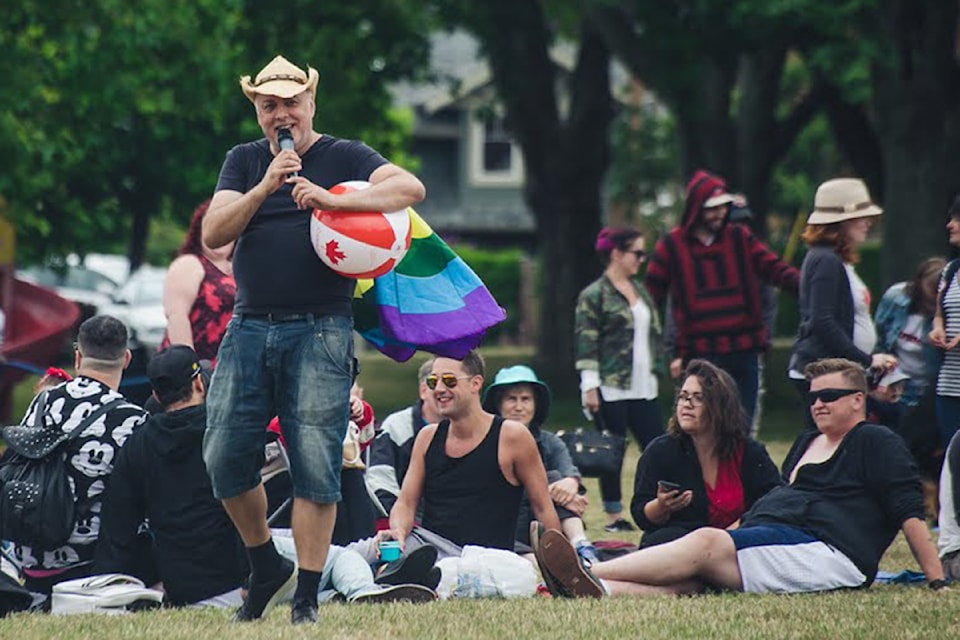Going as far back as the ’80s, Pride celebrations in Victoria have taken many colourful – and sometimes riotous– forms throughout the years. Below, you’ll find three Victoria residents who have opened up to share their stories, explaining how they’ve seen the festival change, and what Pride means to them. Some have been around to see it all, and some are newcomers. While their experiences differ greatly in some ways, there is one thing that rings true for all our storytellers: Pride has been a space where they've found acceptance and liberation.
Monika Turner, 40 (they/them) - Queer polyamorous LatinX

After moving from Kelowna to Victoria just two years ago, Turner has found a safe space and memories that will last a lifetime at Victoria Pride.
Most memorable for Turner was when their wife performed on the main stage as drag king Fierce Brosnan. In 2023, this included a special dedicated performance of ‘To Me From You’ by Naethan Apollo.
“It meant everything. I think I was probably sobbing,” said Turner. “She felt it was important to perform that because it wasn’t that long ago that gay marriage wasn’t legal here.”
The moment emphasized a feeling of safety that Turner has found while living in Victoria, a place they described as having more representation and acceptance than places they’ve lived in the past.
“When you’re visibly queer, you show other people who are scared that, okay, if they can do it, so can I. And I think that’s why we’re not 100 per cent safe anywhere, but here feels a lot more safe.”
Turner has had their share of difficult experiences being queer within their Latin heritage, growing up while facing homophobia within their own home. They moved to Canada from Venezuela when they were five and didn’t come out until age 33.
Turner said that the representation and diversity in Victoria is more extensive than initial perceptions – one of the goals of Pride festivals everywhere worthy of celebrating, in Victoria and beyond.
It was during Kelowna’s Pride festivities that Turner saw the power of representation in action.
“I was approached afterwards by probably six or seven younger queer people of colour that said, ‘Thank you for talking about your experience, because I feel seen’,” they recalled, adding that in non-Western cultures, the deeply-rooted misogynistic culture can compound the challenges and pain that 2SLGBTQ+ face.
“To have those kids come up to me afterwards, it reminded me of why it’s important to be visibly queer.”
David Tillson, 60 - Past president of the Victoria Pride Society from 2005 to 2022

When David Tillson first attended what later became known as the Victoria Pride Festival, it was much different than what it is today. Gay Pride Week was celebrated in the ’80s, evolving into a one-day picnic event in the early ’90s, first hosted in Beacon Hill Park with a couple of hundred attendees.
“I think there was a hesitancy, like a secrecy to the thing … We’re talking about a community that’s being brought together by the AIDS crisis.”
Tillson recalled the first picnic event at Beacon Hill Park being very community-based.
“Everyone participated; gay men, lesbians, bisexuals, trans folk, First Nations folk,” said Tillson. “It was nice to be out in public and feel free. And to be around your whole community that you didn’t necessarily get to see all of the time. It’s very affirming that there’s more of you out there than what you see on Friday night at the bar.”
At the time, gay marriage was illegal in Canada, and there were no laws about discrimination based on gender, sexuality and identity, he recalls.
Cue to today and things have changed. A couple hundred attendees have grown to tens of thousands. Tillson has seen it all and with front-row seats: he was the past president of the Victoria Pride Society from 2005-2022. During his time as president, the festival added a beer garden, the festival and parade moved to MacDonald Park from Fisherman’s Wharf, where it had a mere 10 vendors in comparison to the over 100 there is today, and the society was re-registered as the Victoria Pride Society.
“The previous name was so long, it didn’t sit on a check,” he said.
Tillson brought a stable board and fundraising experience with him. The festival grew bigger and bigger as it got major sponsors and more media coverage.
Tillson watches as culture shifts still while certain goals of the festival remain a constant.
“All of the groups that make up the Pride community share the same goals. They are all looking for equality, acceptance and the end to violence against us. The focus of Pride (sometimes forgetting representation) has slowly gone from the oppression of homosexuality to gender identity and gender expression,” he said. “The struggles and fights are still there. People with more time and energy – younger than me – will create and steer our community into the future. It takes hundreds of volunteers to build our Pride Week/Month celebrations regardless of the focus.”
Tillson recalls that sense of fight from those early days, when the first Pride Parade emerged in 1994 after organizer Barb McLauchlin phoned the City of Victoria to acquire a permit to march on the sidewalk.
“It was very empowering and very exciting … the permit was just for us to march on the street, on the sidewalk. But then we spilled that onto the street to stop traffic,” said Tillson. “It’s just gotten slowly bigger and bigger and bigger. That’s just the evolution of our culture, acceptance of culture.”
Throughout his time in the community, Tillson has seen Pride change and grow, though he asserts, “I think we’re still fighting.”
“Society is so moving forward. Things that I can’t imagine happening to me, say in my youth are happening for young people now. I have a friend who’s got a teenage son and got his first boyfriend,” Tillson said, noting that would’ve been something many people of his generation would’ve had to hide. “I think it’s easier and easier for younger gay, lesbian, bi, trans people in the community to come out and accept who they are. And I think that’s an amazing thing.”
Alana Delcourt, 52 (she/her) - Cis-femme lesbian

“I love Pride. I do. I live for it … I just love being around people and the acceptance. And the message for me that always sticks out in my head is … love is love …. I still just revel in that message.”
Alana Delcourt has been attending Pride festivals since her early 20s, starting in the 1990s in Vancouver. But since then she has been to Pride festivals in four or five different cities, going to several different ones annually, including Victoria’s for 20.
As a member of the Sidney Pride Committee, Delcourt will help produce Sidney’s first large Pride Festival on June 15 with vendors and food trucks. It’s just one example of how Pride continues to grow on Vancouver Island.
Delcourt and her family knew about her sexuality by the time she was 16, but publicly Delcourt didn’t have her first girlfriend til her mid-20s. She recalls the first Pride she attended, around that age.
“I loved watching the nightclub floats go by with the fun energy and the go-go dancers, lightly pushing boundaries. Just the fun and the happiness of it and the celebration. And, especially back then, just being around family and allyship, it was just so liberating for me.”



